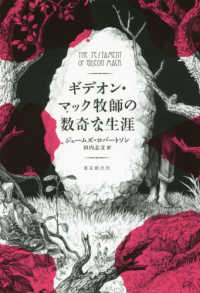Full Description
Andrea Koch argues that the person-centered approach is one of the best ways of being with dreams because it has no limiting concepts of dreaming or the meaning dreams bring with them. The client's sense of her inner world is at the center of the counselling process and gives primacy to the actualizing tendency. This allows for two ground rules for being with dreams: the dreamer finds her own meaning and dreaming is a process of self-healing.
Contents
Introduction 1. Situating Dreaming and Dreams in Person-Centered Theory and Practice. Rogers and dreams; Coming to a contemporary person-centered theory on dreaming; The significance of sharing dreams within therapy; Summary of the main points. 2. Sensing Into Dreams: Charting the Territory. Rogers'description of the creative process; Delineating the client space; The counselor's coordinates; Summary of the main points. 3. Experiencing the Territory with Three Dreams. 'The Museum Dream': Relational person-centered dreamsensing with Helga Lemke;'The damp and crowded cloakroom dream': Focusing and dreamsensing with Barbara McGavin; 'The Nothing to set up dream': Structural dreamsensing with Clara Hill; Differentiating the dream sessions: A client's perspective. 4. Guiding Through the Territory. Dream work in therapy: Facilitating exploration, insight and action; The relational person-centered approach; Focusing and dreamsensing; Diverging pathways?; Which path to travel?; Summary of this chapter. 5. Concluding Thoughts







